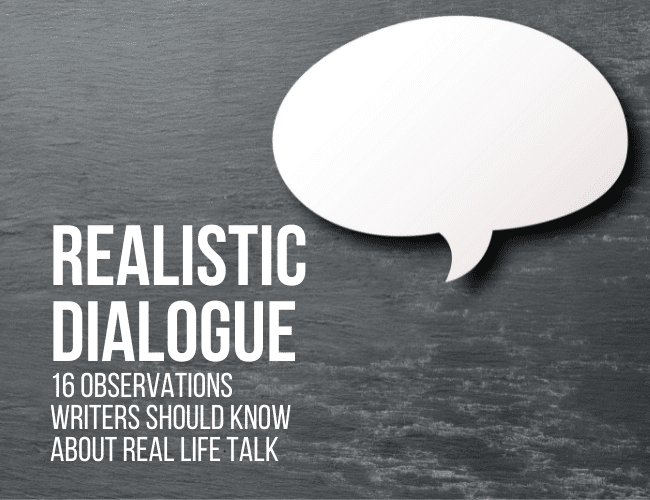
by Sue Weems |
Dialogue is an essential component for most stories, whether it’s for a narrative essay, memoir, or fiction. Even if you’re writing nonfiction, you’ll likely use stories to illustrate your point, and those stories will include dialogue. Today we have some dialogue writing prompts to help you write better dialogue while you develop some story ideas.

by Kellie McGann |
Writers encounter dialogue every day, but too often recently I’ve seen great stories ruined by choppy, incoherent, and straight up weird dialogue.
Let’s break down the essentials of dialogue tags so we can all write clearer conversations.

by Joslyn Chase |
If you’re looking for a surefire way to improve your story, you’ll be happy to know there’s a fast-acting method at your disposal. According to writing expert James Scott Bell, it’s “the fastest way to improve any manuscript.”
I’m talking about dialogue.
But here’s the thing—dialogue is more than just the words you put in your characters’ mouths. On screen and stage, it’s the actor’s job to take his lines and infuse them with meaning, expression, emotion, and so on. On the page, that’s your job.

by Joe Bunting |
Dialogue can make your story. In fact, as Shakespeare knew, you can tell a whole story just through authentic dialogue.
Good stories are about real people, and people in real life love to talk to each other. We are biologically disposed to receive pleasure from conversation.
If you want to write good stories, learn how to write effective dialogue. In this article, you can learn sixteen dialogue tips that will help you take everyday conversations and turn them into stretches of dialogue that benefit your story.

by J. D. Edwin |
Dialogue is an essential part of storytelling. We all know our characters speak to express themselves, and effective dialogue says a lot more than just the information conveyed—it also shows your character’s personality, range of knowledge, and their current state in the story.
But do you find that your characters sometimes drone on and on without getting to a point? Or that it seems to take a lot of words to get to the single idea you’re trying to get to? Or maybe you sometimes lose control of the exchange and find you don’t know which way to direct the conversation.
The problem is usually that your dialogue has too much “fluff.” Fluffy dialogue tends to slow down the story and bore the reader. But fear not; there are a few simple ways to remedy this.

by Joslyn Chase |
According to James Scott Bell, the fastest way to improve any manuscript is by learning to write dazzling dialogue. Nothing grabs and holds reader attention like well-written dialogue, but how do you do it?
There are a lot of pitfalls to watch out for when it comes to using dialogue in your writing. Whether you’ve given this a lot of thought, or none at all, the subject bears exploring. Let’s take a look at six hazards to be wary of, and what you can do about them to make your dialogue more engaging.








